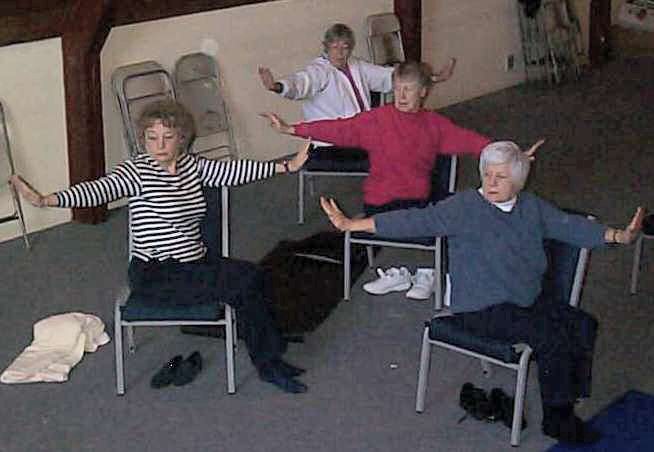 Yoga is one of the most accepted natural alternatives to these drugs, which may improve pain and joint functioning. But not everyone is able to, or feels comfortable with, regular forms of yoga which require standing. This is where chair yoga comes in. Chair yoga uses modified poses to accommodate the participant's need to either sit or stand while holding the chair, thus preventing falling or the fear of doing so.
Yoga is one of the most accepted natural alternatives to these drugs, which may improve pain and joint functioning. But not everyone is able to, or feels comfortable with, regular forms of yoga which require standing. This is where chair yoga comes in. Chair yoga uses modified poses to accommodate the participant's need to either sit or stand while holding the chair, thus preventing falling or the fear of doing so. What about the research? A recently published study aimed to test the effect of chair yoga on 131 older adults with lower-extremity osteoarthritis, comparing it to a health education program. Both of these interventions ran twice weekly for 8 weeks. Chair yoga significantly reduced pain, walking speed and fatigue compared to the health education program, but the effects wore off once people stopped practicing it. Scores on the WOMAC Physical Function test and balance also improved. For example, balance scores improved from just over 31 to almost 35 on the Berg balance score within 4 weeks, then rose by a tiny amount to 35 and stabilised. These results were almost seen as statistically significant (an over 95% chance of being caused by the treatment). Pain scores improved more rapidly at first and then stabilised, while changes to fatigue scores varied in speed over time. Teachers of chair yoga describe it as making the health benefits of yoga accessible to everyone, and some students can progress towards less dependence on using the chair for seating or balance support. Overall, if you suffer from a chronic illness that prevents you from doing traditional yoga, but you are able to perform it with the help of a chair, it's worth trying.
No comments:
Post a Comment